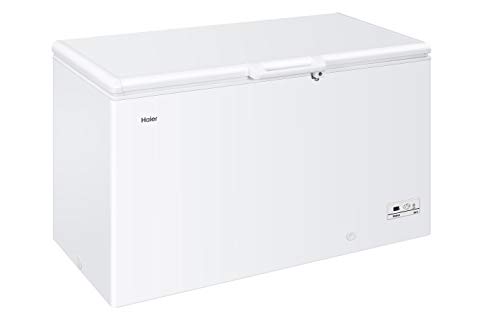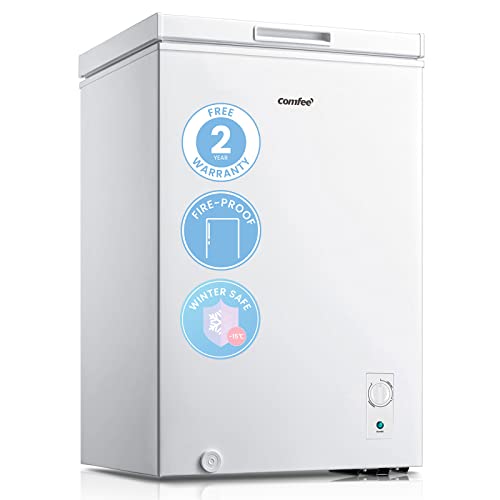How Refridgerator Altered My Life For The Better
페이지 정보
작성자 Luigi 작성일23-12-12 16:18 조회11회 댓글0건관련링크
본문
 How to Choose a Refrigerator
How to Choose a Refrigerator Refrigerators are kitchen appliances utilized to keep food and beverages cold. They are commonly used in homes and in offices, hotels, and college dorm rooms.
Refrigerators are kitchen appliances utilized to keep food and beverages cold. They are commonly used in homes and in offices, hotels, and college dorm rooms.Some refrigerators are equipped with sophisticated features such as cameras and sensors. Some have touchscreens that let you watch videos, search for recipes, view family calendars and shopping lists, or leave notes for product family members.
Temperature Control
The proper temperature in the refrigerator ensures that food items are safe for storage and slows the degradation of many food items due to spoilage. This is especially important for foods like eggs and milk, which can quickly rot at ambient temperatures but remain stable at refrigerator levels. Refrigerators are also used to store pharmaceutical products like drugs and vaccines that lose efficacy with time. Refrigerator monitoring systems are readily available to help ensure a medical facility or laboratory keeps a safe cold chain.
A refrigerator is equipped with an internal thermal insulation to keep its contents cooler than the surrounding environment. It utilizes an energy source to transport warm air outside the refrigerator into an insulated compartment where it becomes very cold. The refrigerator is equipped with a control system that activates the cooling system when its internal temperature exceeds the threshold set by the manufacturer. This stops the growth of bacteria inside the refrigerator.
Each zone of the lader fridge is designed to serve a particular function. The bottom shelves are ideal for storing perishable items such as fresh meats and vegetables that require the minimum temperatures to preserve their taste and texture. The shelves should be kept clear to allow cool air to circulate through the refrigerator. Keep soft cheeses and cured food items in a separate deli drawer for the perfect charcuterie platter.
Refrigerators also have glass or stainless steel doors to protect the interior product and facilitate cleaning. Some refrigerators include a door-alarm that can be programmed. It will notify you when the fridge or freezer is not closed for too long. You can set them up to notify multiple people and in escalating levels depending on your requirements. They can even be set to record temperature and send graphs remotely via email or text.
freestanding fridge appliance thermometers can be a cost-effective alternative to the built-in thermometers found in the majority of refrigerators. It's important to check the temperature of your freezer and refrigerator often, especially in the event of a power failure or if temperature settings are changed manually. Ideally, both the integrated larder fridge and freezer should be set to 40 degrees Fahrenheit or lower.
Storage Capacity
Refrigerator capacity is an important factor when it comes to choosing the right model to meet your needs. There are a variety of sizes to pick from, ranging from small refrigerators with a capacity of less than 15 cubic feet to large models that accommodate more than 26 cubic feet. To determine the size you require, think about your family's eating habits and the number of people living in your home. For two people, an average of 11-13 cubic feet of refrigerator space is sufficient and 18 to 22 cubic feet is recommended.
Look at the depth of the fridge, as well as the space. Some models are deeper than others, which allows them to fit in tight spaces and not take up too much space under your counters. Cabinet-depth fridges are also an alternative. Their depth is similar to the depth of a typical kitchen cabinet, but the handles can extend a bit further. They can be a great option for homes where counter space is at a premium, and they can also appear more stylish than traditional fridges.
When you are shopping for a new refrigerator, inquire about the level of noise and energy consumption. Many manufacturers offer quieter models for residential use, and some offer refrigerators that consume less electricity than similar models. You can determine the energy consumption average of a model by checking the yellow Energy Guide label. Also, test a model's operation by opening and closing the doors.
Most modern refrigerators include the pantry drawer. It is a full-width compartment with separate temperature controls that can be used to store many different things. These drawers can be used to store trays for parties as well as wine and other things at a specific temperature. They can be programmed to store wines or deli food items as well as soft drinks, depending on the model.
Energy Efficiency
Refrigerators use a lot of electricity. It is therefore important to select a refrigerator that is energy efficient. The good news is that refrigerators have become more energy efficient in the past. Motors, insulation, and magnetic door seals have all improved over time, which means that a newer fridge will use less power than a previous model of the same size. It is possible to reduce the energy consumption of your refrigerator further by buying an energy efficient model. A refrigerator that has an Energy Star rating will use much less energy than a model 10 years old or older.
Efficiency in energy is crucial for consumers with limited access to electricity grids. Refrigerators are usually among the most costly appliances for households that are off grid and their high energy consumption means that they require large solar home systems (SHS) which aren't affordable for families earning less than $2 a day. The energy consumption per year of refrigerators is a crucial factor to determine whether it's economically feasible for consumers to purchase and operate. (PATH and WHO 2013 ). McCarney et. and. 2012).
We will start by explaining the fundamental refrigeration cycle. A refrigerator cools by pushing a liquid refrigerant through a sealed unit beginning as a liquid, and then goes through a compressor which reduces the liquid to create a vapour. This vapor flows into coils that are outside the refrigerator and draws heat from it. It then cools and then returns to liquid. This process repeats many times, keeping the food cold while the vapor flows through the coils.
While refrigerators remain among the most expensive appliances for off-grid consumers, improving their energy efficiency makes them more affordable. By decreasing the amount of energy they use the refrigerator can be powered by a smaller SHS and reduce overall system costs for consumers. Based on the size, style, and features of the refrigerator, the savings on energy will differ. For instance, ice-makers and through-the-door water dispensers can add cost but may substantially increase the energy use which, in turn, increases the amount of SHS required to power it.
Maintenance
The life expectancy of a refrigerator can be greatly increased by regular maintenance and inspection. Check the condenser, ice maker and defrost drain. Also, check the seals on the door. Cleaning and replacing the water filter is also essential. Doing these simple tasks can prolong the life of your refrigerator and also save you money on energy bills.
The easiest and most effective refrigerator maintenance task is to clean the inside of your refrigerator Product on a regular basis. This includes throwing away old food and wiping down shelves and crispers, walls and the inside of the doors of your refrigerator and freezer. This will lower the risk of foodborne illness and unpleasant odors. It is also recommended to regularly check the temperature of your refrigerator using an electronic thermometer in your refrigerator. Refrigerators that aren't maintained can experience temperature fluctuations that could lead to food waste and higher electricity bills.
The condenser coils in your refrigerator are also required to be cleaned every two years. This will eliminate any dirt, grime, hair or other debris that has accumulated. The coils are situated on the bottom or rear of your appliance and are essentially radiator-like parts that help remove heat from your refrigerator. They aren't able to disperse the heat as effectively when they are dirty. Your refrigerator will use more energy to run.
Another thing you should be checking regularly is your refrigerator's gasket, which is designed to create an air-tight seal between your refrigerator and your home's ductwork. It is important to keep your fridge's contents cold. However with time, the seal can be worn down by sticky and greasy fingerprints. syrups. To keep your fridge's gasket in good shape, you should regularly wipe it down with the help of a damp cloth.
It is also a good idea to clean the drip tray, which is generally under the compressor unit of the refrigerator. The drip pan is responsible to collect the water that is drained from the refrigerator's defrost cycle. It should be cleaned regularly to prevent the growth of mold and unpleasant smells.
댓글목록
등록된 댓글이 없습니다.

